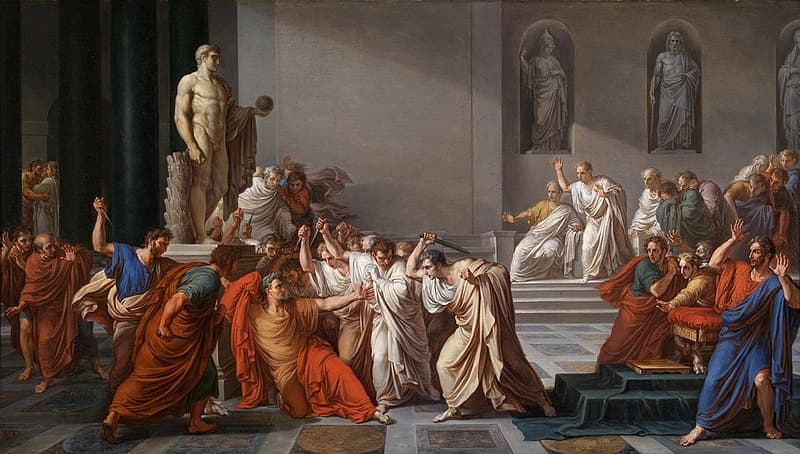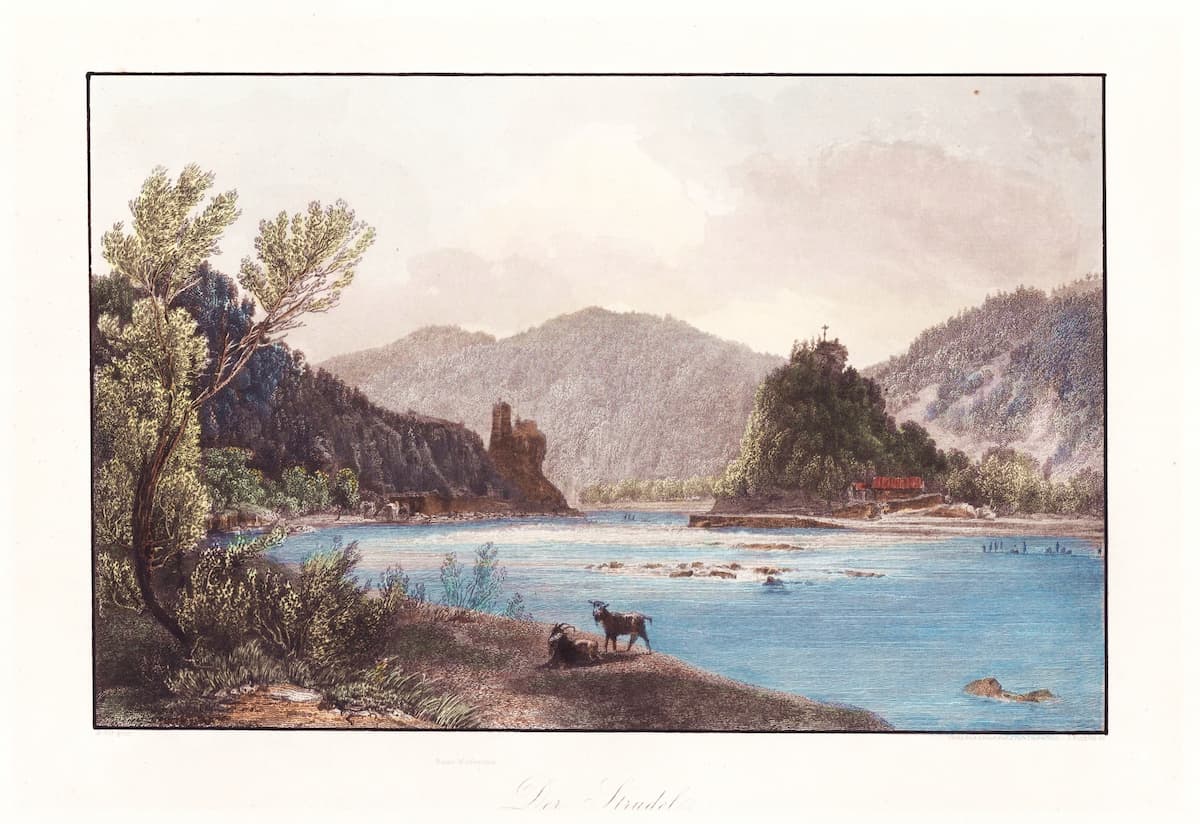For making noise long distances, there’s nothing like the trumpet. According to the Bible, after marching around the city of Jericho for 6 days, the walls came down on the seventh day, succumbing to trumpet-blowing and shouting.

Julius Schnoor von Carolsfeld: The Battle of Jericho, ca 1850
Research has shown, however, that this may all be nationalist propaganda to establish territorial claims; however, the subject did capture artists of all time periods.
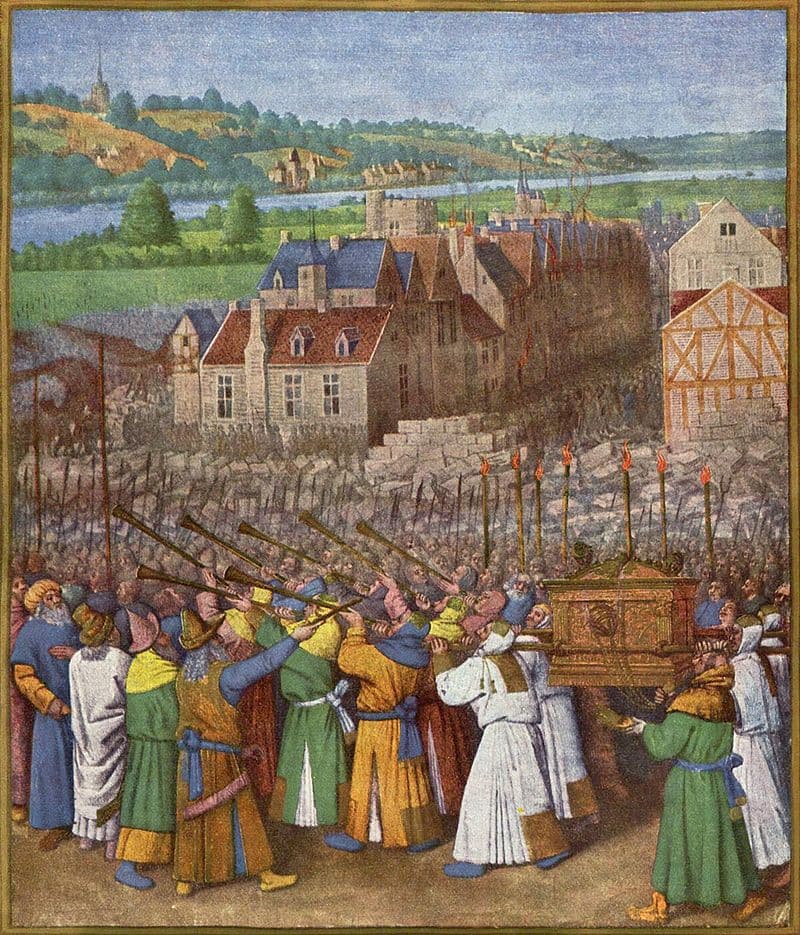
Jean Fouquet: The Battle of Jericho, ca. 1415
Now that we’ve established it has a changing effect on the environment, it took a bit of time for the trumpet to change from being an outdoor instrument for signaling and fanfare.
The basic trumpet is a long tube that flares at the end of the bell. During the Iron Age, the trumpet called the carnyx, was a long S-shaped tube with an animal head styled for the bell.

Three carnyx players depicted on plate E of the Gundestrup cauldron (detail), Denmark, ca 200 BC
By the 17th century, the trumpet had been folded back on itself to become a bit more manageable in size.
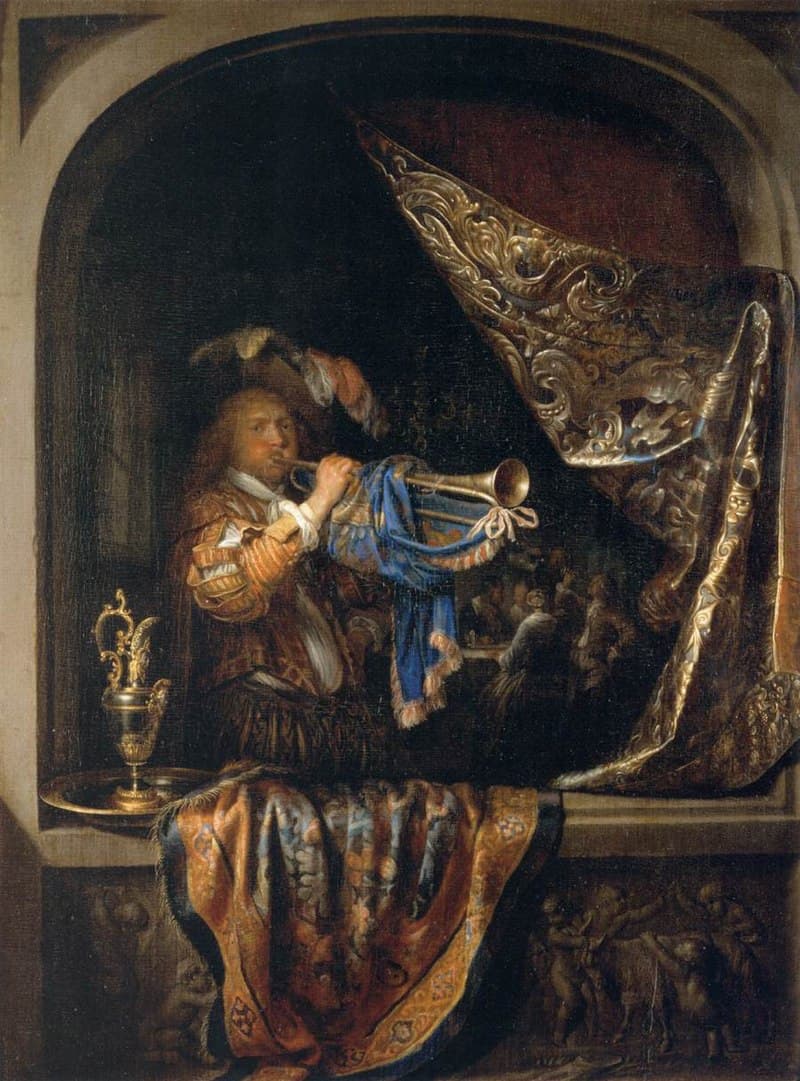
Gerrit Dou: Trumpet-Player in front of a Banquet, c. 1660–1665
Other versions circled the instrument up even smaller. Here’s Gottfried Reiche, who was the chief trumpet player for J.S. Bach in Leipzig, with his trumpet – note the extra loop by the mouthpiece for adding on different lengths of tubing to change the pitch of the instrument.
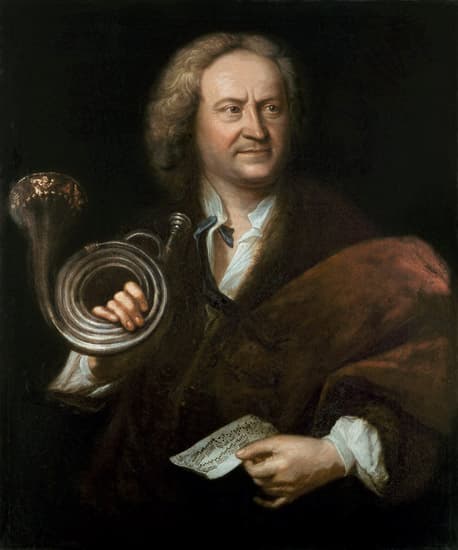
Elias Gottlob Haussmann: Gottfried Reiche, 1726 (Leipzig: Museum of City History)
It wasn’t until the 19th century that piston valves were added to the trumpet, and on this Yamaha trumpet, you can see that the middle valve adds only a small loop of tubing, lowering the pitch by a half-step; the first valve adds a longer length, lowering the pitch by a whole step, and the third valve the longest length of one and a half steps (equal to valves 1+2). The finger hooks on the first and third valves are little slides to help adjust the tuning.
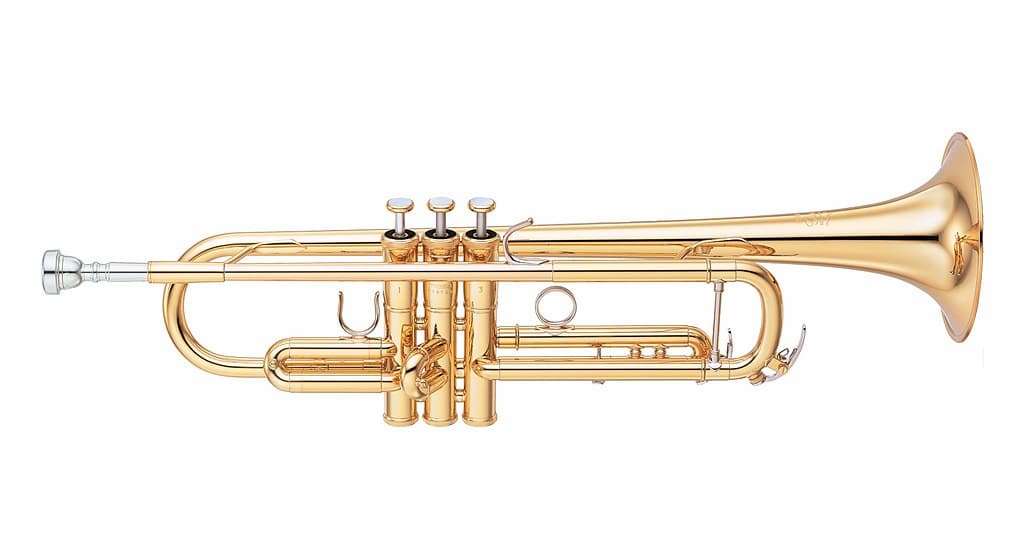
Modern Bb trumpet with piston valves
In Austrian and German orchestras, a different kind of valve, the rotary valve, may be used.
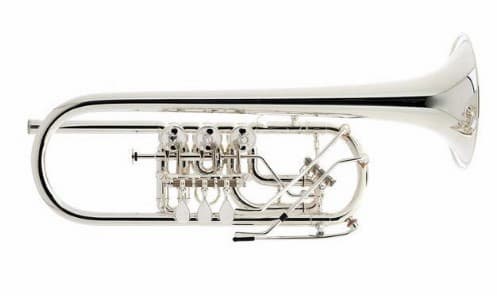
Modern C trumpet with rotary valves
The trumpet’s brilliance of sound carries over the orchestra and has been used by composers for a number of different scenarios: battle scenes, to emphasize the text of a song, and in its own sonatas and concertos.
Handel’s use of the trumpet to underline the text in Messiah is particularly apt.
George Frideric Handel: Messiah, HWV 56 (1751 Version) – Part III: Aria: The trumpet shall sound (Eamonn Dougan, bass; Academy of Ancient Music; Edward Higginbottom, cond.)
In his Battle Symphony, Op. 91, better known as Wellington’s Victory, Beethoven uses trumpets, and the trumpet calls for both the English and French armies as part of his composition.
Ludwig van Beethoven: Wellingtons Sieg oder Die Schlacht bei Vittoria, Op. 91, “Battle Symphony”, “Wellington’s Victory” – The Battle (Slovak Radio Symphony Orchestra; Ondrej Lenárd, cond.)
As a solo and concerto instrument, the trumpet was used by composers from Bach forward.
J.S. Bach: Brandenburg Concerto No. 2 in F Major, BWV 1047 – III. Allegro assai (William Bennett, flute; Neil Black, oboe; Crispian Steele-Perkins, trumpet; José Luis García, violin; English Chamber Orchestra; Philip Ledger, cond.)
When Vivaldi wrote his concerto for 2 trumpets, he brought out both their fanfare qualities and their melodic qualities.
Antonio Vivaldi: Concerto for 2 Trumpets in C Major, RV 537 – I. Allegro (Tafelmusik Baroque Orchestra; Jeanne Lamon, cond.)
Mozart’s student Johann Nepomuk Hummel found a different side of the trumpet for his 1803 Trumpet Concerto, particularly in the slow middle movement.
In his Water Music, which, as an outdoor entertainment, had to have some volume behind it, Handel wrote his Hornpipe for trumpet and horns.
George Frideric Handel: Water Music: Suite No. 2 in D Major, HWV 349 – II. Alla Hornpipe (Concerto Köln)
Another fanfare-like work is Jean-Joseph Mouret’s 1729 Rondeau for trumpets and drums with orchestra.
Jean-Joseph Mouret: Suite de Symphonies, “Sinfonies de Fanfares” – I. Rondeau (Adolf Scherbaum, trumpet; Paul Kuentz Chamber Orchestra; Paul Kuentz, cond.)
In opera, the trumpet had a role, and one of its most famous was in the final part of the overture in Rossini’s William Tell. The Finale of the overture also carries the title The March of the Swiss Soldiers. It’s now more familiar as the theme song for The Lone Ranger, a U.S. television serial from nearly 75 years ago.
The Lone Ranger 1949 – 1957 Opening and Closing Theme
Rossini: William Tell Overture Finale (Milwaukee Symphony Orchestra; Edo de Waart, cond.)
In the 19th century, the trumpet followed other solo instruments, such as the piano and the violin, into the variations business. One of the enduring variation sets was Jean-Baptiste Arban’s 1864 Fantaisie and Variations on The Carnival of Venice. Author of a trumpet method book that is still used to this day, Jean-Baptiste Arban created the modern trumpet school and, in his Carnival of Venice variations pushed the trumpet to its technical limits. In this version, we hear it played on the cornet, a softer version of the trumpet.
The original melody is a Neapolitan folk song originally entitled ‘O Mamma, Mamma Cara’, and Niccolo Paganini did a series of 20 variations on it. Arban is thought to have been challenged by Paganini’s set and created his own. Variations on the same melody have also been written for euphonium, guitar, piano, double bass.
Jean-Baptiste Arban: Fantaisie and Variations on The Carnival of Venice (Gerard Schwarz, trumpet; William Bolcom, piano)
In the 20th century, there was a change in trumpet settings, looking more at the instrument’s soft side.
In 1906, George Enescu wrote his trumpet work Légende, as a work of both virtuosity and lyricism. The declarations calm down at the end to a ‘wistful, muted reverie’ and give us a different view of the declarative sound of the trumpet.
George Enescu: Légende (Håkan Hardenberger, trumpet; Roland Pöntinen, piano)
Charles Ives’ 1908 work, The Unanswered Question, was not performed until 1946. The background of strings creates the canvas for the solo trumpet to pose ‘The Perennial Question of Existence’ against a woodwind quartet of ‘Fighting Answerers.’ In performance, the string section should be off-stage and also always at the dynamic level of pianississimo (ppp). The strings, the trumpet, and the winds each follow their own tempos, and the work generally requires 3 conductors, one for each ensemble.
Charles Ives: The Unanswered Question (William Vacchiano, trumpet; New York Philharmonic Orchestra; Leonard Bernstein, cond.)
Paul Hindemith’s Trumpet Sonata, written in 1939, took the trumpet on a much more discursive journey than it had been on in the earlier centuries. It’s still powerful, but it’s not urging into battle as much as making a declaration. The work was written during Christmas 1939 while Hindemith was in exile in Switzerland.
Paul Hindemith: Trumpet Sonata – I. Mit Kraft (Osamu Takahashi, trumpet; Karl-Andreas Kolly, piano)
The trumpet will always command respect due to its sound. It’s up to the composers to change that sound and give it other qualities – song-like, discursive, or mysterious.
For more of the best in classical music, sign up for our E-Newsletter

